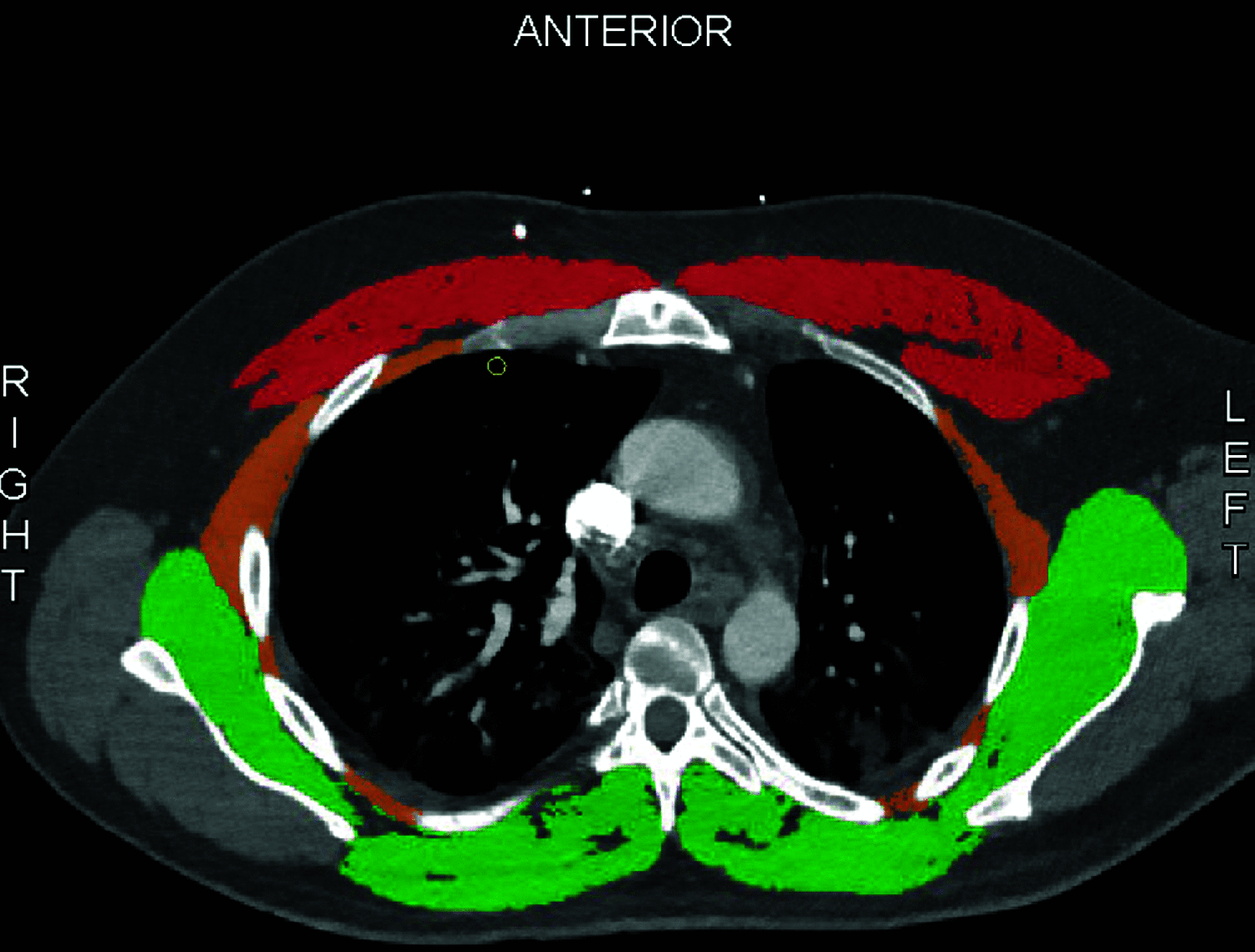Respiratory Musculature Evaluated by Computed Tomography in the Setting of Prolonged Mechanical Ventilation
- PMID: 37185112
- PMCID: PMC10353160
- DOI: 10.4187/respcare.09491
Respiratory Musculature Evaluated by Computed Tomography in the Setting of Prolonged Mechanical Ventilation
Abstract
Background: Diaphragm atrophy has been observed in subjects who undergo invasive mechanical ventilation. We propose a new method to assess for respiratory muscle (RM) changes in subjects who undergo invasive mechanical ventilation by assessing for changes in respiratory muscles through computed tomography (CT).
Methods: A retrospective case series study was conducted on subjects who underwent invasive mechanical ventilation and received at least 2 chest CT scans during admission. Exclusion criteria included history of chronic mechanical ventilation dependence and neuromuscular disease. Respiratory muscle cross-sectional area (CSA) was measured at the T6 vertebrae.
Results: Fourteen subjects were included: mean (± SD) age, BMI, and admission APACHE II scores were 54.0 y (± 14.9), 32.6 kg/m2 (± 10.9), and 23.5 (± 6.0), respectively. Ten (71%) subjects were male. Mean length of time between CT chest scans was 7.5 d (± 3.3). Mean duration of invasive mechanical ventilation was 4.5 d (± 3.4). The percentage change in TM CSA among those who underwent invasive mechanical ventilation was 10.5% (± 6.1).
Conclusions: We demonstrated that serial analysis of respiratory muscle CSA through CT chest scans can be a method to assess for respiratory muscle atrophy in subjects undergoing mechanical ventilation. Future prospective studies involving larger populations are needed to better understand how this method can be used to predict outcomes in mechanically ventilated patients.
Keywords: acute respiratory failure; mechanical ventilation; respiratory muscle wasting.
Copyright © 2023 by Daedalus Enterprises.
Conflict of interest statement
The authors have disclosed no conflicts of interest.
Figures


References
-
- Herridge MS, Chu LM, Matte A, Tomlinson G, Chan L, Thomas C, et al. ; Canadian Critical Care Trials Group. The RECOVER Program: disability risk groups and 1-year outcome after 7 or more days of mechanical ventilation. Am J Respir Crit Care Med 2016;194(7):831-844. - PubMed
-
- Damuth E, Mitchell JA, Bartock JL, Roberts BW, Trzeciak S. Long-term survival of critically ill patients treated with prolonged mechanical ventilation: a systematic review and meta-analysis. Lancet Respir Med 2015;3(7):544-553. - PubMed
-
- Dasta JF, McLaughlin TP, Mody SH, Piech CT. Daily cost of an intensive care unit day: the contribution of mechanical ventilation. Crit Care Med 2005;33(6):1266-1271. - PubMed
-
- Esteban A, Frutos F, Tobin MJ, Alia I, Solsona JF, Valverdu I, et al. ; Spanish Lung Failure Collaborative Group. A comparison of four methods of weaning patients from mechanical ventilation. N Engl J Med 1995;332(6):345-350. - PubMed
MeSH terms
LinkOut - more resources
Full Text Sources

